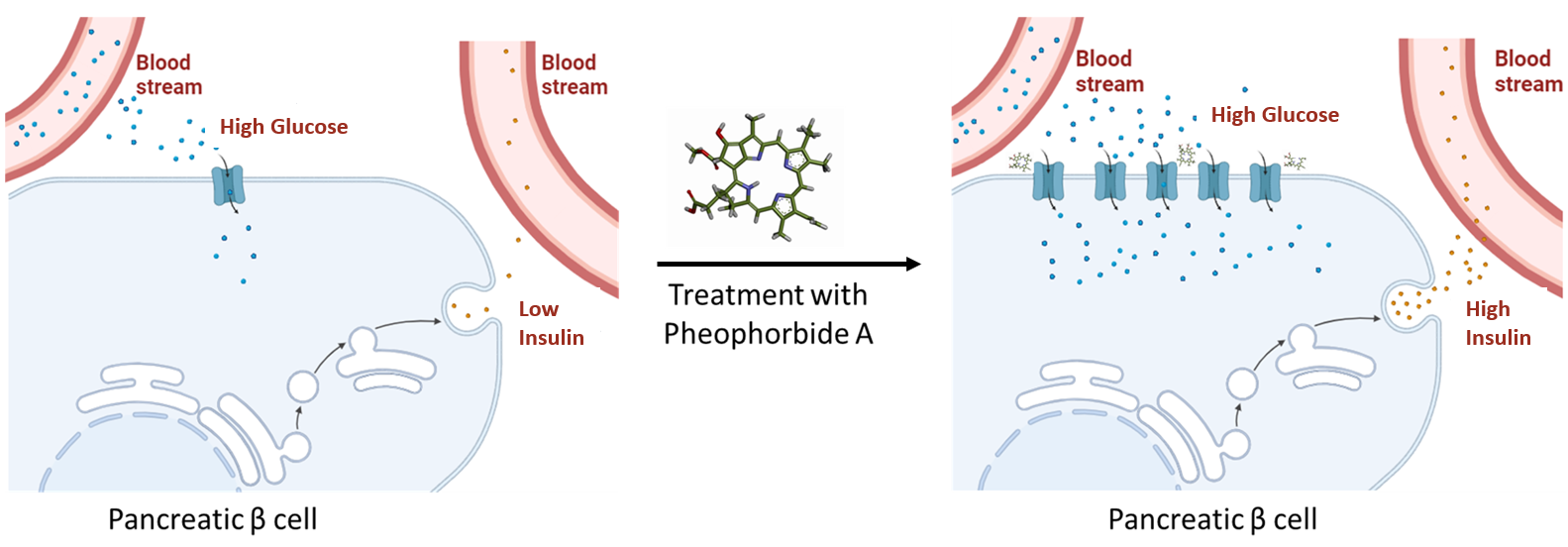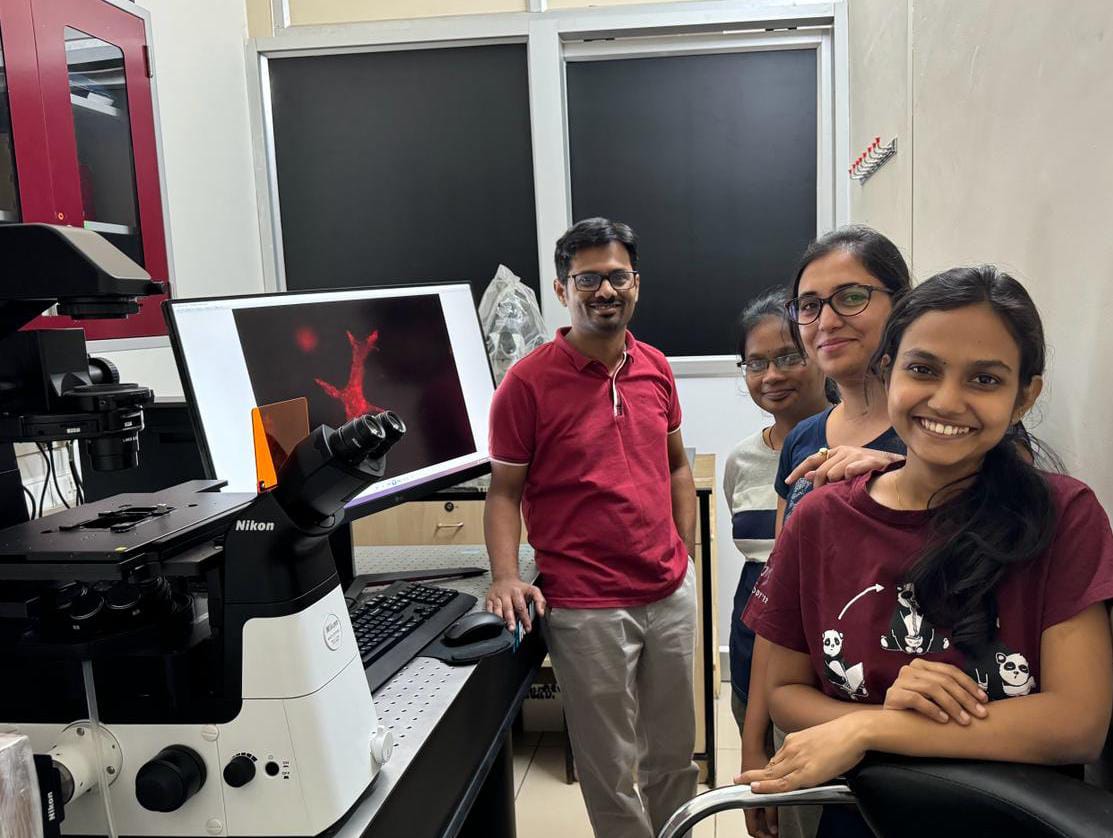Can phytochemicals help treat diabetes?

Effect of treatment with pheophorbide A-enhanced GLUT1 density, thereby leading to higher glucose uptake, which may increase insulin secretion during diabetes (Image: Saptadipa Paul)
Diabetes is an endocrine metabolic disorder affecting 463 million adults (20-79 years) across the globe. Current treatment strategies include oral hypoglycemic agents, insulin injections, combinatorial approaches and so on. But the prolonged use of such treatments is associated with various micro and macro vascular diseases.
Recently, several studies have shown that some plants and natural products have the potential for management of blood glucose levels. However, the cellular mode of action of such products remains to be explored. In a new study, researchers from the Department of Developmental Biology and Genetics, led by Nikhil R Gandasi and first author Saptadipa Paul, explored the cellular mechanisms of action of Pheophorbide A, a breakdown product of chlorophyll, which is present in various green plants.
What the researchers found is that Pheophorbide A modulates the activity of Glucose transporters or GLUTs found in the cell membrane of pancreatic beta cells, consequently enhancing glucose uptake by the cells. The binding action of Pheophorbide A was found to be comparable to the conventional metformin used for controlling glucose levels. This raises the possibility that Pheophorbide A may stimulate glucose-induced insulin secretion during diabetes. Cellular studies using both in-silico and in-vitro methods showed improved therapeutic potential of the GLUT1-Pheophorbide A complex, providing a crucial insight for improved management of blood glucose in diabetes.
REFERENCE:
Paul S, Pallavi A and Gandasi NR, Exploring the potential of pheophorbide A, a chlorophyll-derived compound in modulating GLUT for maintaining glucose homeostasis, Frontiers in Endocrinology (2024).
LAB WEBSITE: https://dbg.iisc.ac.in/people/nikhil-gandasi/




